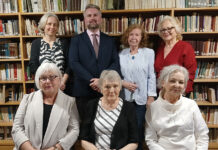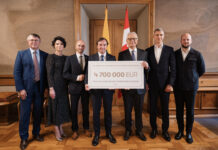
In her essential volume Lithuanian Customs and Traditions, author Danutė Bindokienė writes about Easter and the time leading up to it, including Lent, Palm Sunday and Holy Week. In olden times, the last week of Lent was when preparations for Easter began, and Holy Thursday, Good Friday and Holy Saturday were very important.
The last three days before Easter were considered special. Lending anything was avoided on these three days because life would later be unlucky, as luck is lent away. On Holy Thursday it was necessary to wash or bathe in a river, lake or pond, to make sure that all blemishes may vanish. If such bathing is not possible, face-washing with cold water outside at dawn will achieve the same result. On that day the whole house must be cleaned as well.
Weather could be predicted on Holy Saturday – a west wind foretells a rainy summer, wind from the south – a warm summer, from the east – a good harvest, and north wind brings a cold summer.
Easter food would be prepared on Holy Saturday, and after that was done, Easter eggs would be coloured by the whole family for egg-smacking contests, gifting and egg-rolling. (For detailed egg-decorating instructions see Resources/instructions/Easter eggs-margučiai at https://www.ltfai.org.)
The Easter vigil would take place at church on Saturday evenings, sometimes through the night with Resurrection services at dawn. Many religious customs have changed with the passage of time, with the Soviet occupation prohibiting religious practices, and the displacement of many Lithuanians to various continents after World War II.
The word for Easter, Velykos, was borrowed from the Belarusian, and means “important day“. Folklore tells us that Easter morning abounds with magical power, mostly concentrated in flowing water. As the sun rose on Easter morning, it was said to “dance“ and change colour, a phenomenon seen by those who rise before dawn to watch for it on the horizon.
Resurrection services in Lithuania included a procession around the church, with church flags, flowers and the singing of hymns, and the blessing of Easter baskets containing decorated eggs, bread and other food arranged at the altar rail. At Easter breakfast a blessed egg was shared by the family to ensure peace, love and harmony. A variety of other dishes were consumed to eat well and recover from Lent. Neighbours often shared their food with the less fortunate. The Easter Granny gifted good children with decorated eggs and sweets, helped by bunnies.
It is still customary to gather for a feast on Easter Sunday, and many have adapted local cuisines, making turkey, lamb or ham for the main meal, or an Easter brunch with the traditional Lithuanian “smorgasbord“ offerings popular at any celebration: eggs, herring, beet and bean (“red“) salad, meat in aspic (“šaltiena“ – see Lithuanian recipe) and other delicacies. In our family we were more interested in Easter desserts, and baking a “babka”, (sweet bread, similar to Italian panettone), or other yeast bread, in addition to a layered meringue cake, nut torte, or sponge cakes shaped like hedgehogs, prickly with slivered almonds.
Today there are as many variations of Easter food and traditions as there are households passing grandmother‘s best recipes to younger generations, and they are all symbolic of love. May the spirit of the Resurrection, the awakening spring season and the warmth of friends and family be with us all.



























